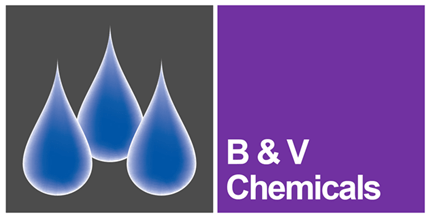In a previous blog post, we explored how to choose the right biocide for your closed circuit system. In this blog post, we take a step back and consider one critical piece of information: how to calculate the correct dose of chemicals to be used in a closed system.
Unfortunately, the water treatment companies contracted to carry out a variety of tasks on-site, from flushing to routine maintenance and testing of systems, are rarely provided with this essential piece of information. It’s therefore extremely useful to know how to estimate system volumes.
3 methods for calculating closed circuit system volumes
There are three key methods for calculating closed circuit system volumes:
- Using kW ratings
- Using Systemtrace CC
- Using length of pipework
These calculations are widely used across the industry and although not 100% accurate, will give a workable idea of system volumes which can be used for estimating chemical volumes required for treatment.
Method 1: using kW ratings
Most chillers or boilers of heating systems will give a kW output rating. This can usually be found on a plaque on the equipment plant itself. If this is a new system, kW ratings may be specified by the installer and it may be possible to obtain the kW ratings from this specification.
For commercial pressurised systems, multiply the kW rating by the relevant figure below to obtain an estimate of system volume:
- Systems comprising of perimeter heating, convectors etc = 6 litres / kW
- Ventilation systems (Air handling units, fan coils etc), chilled water systems = 8 litres / kW
- Steel panel radiators = 11 litres / kW
- Cast iron radiators = 14 litres / kW
- Distant heating systems in large sprawling buildings = 20 litres / kW
- Underfloor heating = 23 litres / kW
We have a handy calculator in our product guide for calculating based on this method, and for required volumes of product.
Method 2: using Systemtrace CC
B & V Chemicals have carried out extensive testing and offer a tracer product which can be used in conjunction with a suitable photometer to accurately work out the volumes of closed circuit systems. Whether your system is approximately 10,000 or 50,000l, SYSTEMTRACE CC is economical and easy to use and will help you achieve better control of your water treatment regime.
One litre of Systemtrace CC will give 75µg/l of tracer when diluted in 10,000 litres. The process works as follows:
- Accurately measure the required volume of Systemtrace CC and add it to the system at an appropriate dosing point (e.g. through a dosing pot)
- The system should be fully recirculating and left for a minimum of 2 hours to allow even dispersion of the tracer
- Samples should then be taken from representative points on the system. The tracer chemical (PTSA) is a fluorescent dye; it emits wavelengths between 400-500nm when irradiated with UV light and is easily measured using an appropriate photometer.
For further details on Systemtrace CC please contact our technical department.
Method 3: using length of pipework
A calculation can also be made based on the length of pipework, the relevant diameters, and the capacity of any associated tanks/vessels. Where possible, it’s prudent to refer to the original design/installation schematics which should include modifications/updates to the original system.
Tank volumes:
Rectangular tanks:
Tank diameter mm x Tank length mm x Tank height mm = tank volume in litres.Cylindrical vessels:
Tank diameter mm /2 = radius of tank mm
(Radius of tank mm2 x 3.14) x height of tank mm = tank volume in litres.
The internal volume of the chiller/boiler will usually be stated on a plaque on the equipment itself.
In order to calculate the volumes of associate pipework the table below can be used.
Guide for the contents of various sizes of pipework
| 1 metre of pipework size | Volume in litres | 1 metre of pipework size | Volume in litres |
| 15mm | 0.177 | 100mm | 7.85 |
| 22mm | 0.381 | 125mm | 12.27 |
| 25mm | 0.491 | 150mm | 17.67 |
| 28mm | 0.616 | 200mm | 31.42 |
| 32mm | 0.804 | 250mm | 49.09 |
| 37mm | 1.075 | 300mm | 70.7 |
| 42mm | 1.386 | 350mm | 96.22 |
| 50mm | 1.964 | 400mm | 125.68 |
| 54mm | 2.291 | 450mm | 159.06 |
| 65mm | 3.319 | 500mm | 196.38 |
| 75mm | 4.418 | 600mm | 282.78 |
| 80mm | 5.027 |
Other things to consider
Wherever possible, the actual system volume should be obtained from the customer and this should be noted in the logbook for that system. For older systems, it’s unlikely that this information will be available.
If any of the three methods above are used in order to calculate system volumes, it’s important to remember that they provide a good guideline/estimate of system volume only. When adding an inhibitor to a system, always ensure that the inhibitor is added at levels to achieve at least the minimum level of inhibitor recommended by the supplier.
When adding biocide to a system, it’s often difficult to test for the levels present. Some biocides based on isothiazolinone and glutaraldehyde have field tests available, but they are quite complex. Some biocides such as Pseudokill have more straightforward test kits available, so it’s possible to check the levels of this biocide in a system.
Interested in finding out more?
If you would like to discuss any of the above methods or to learn more about our Systemtrace CC product, please contact our technical department on 01327 709439 or ownlabel@bvwater.co.uk


.jpg)



